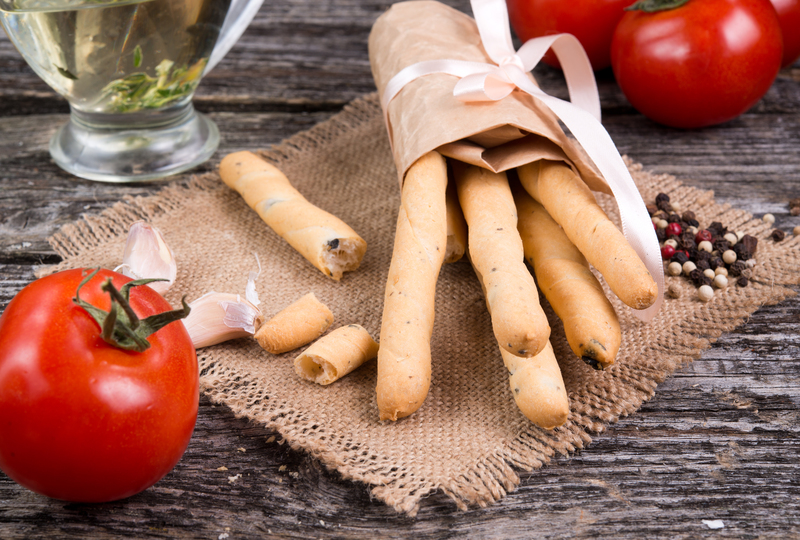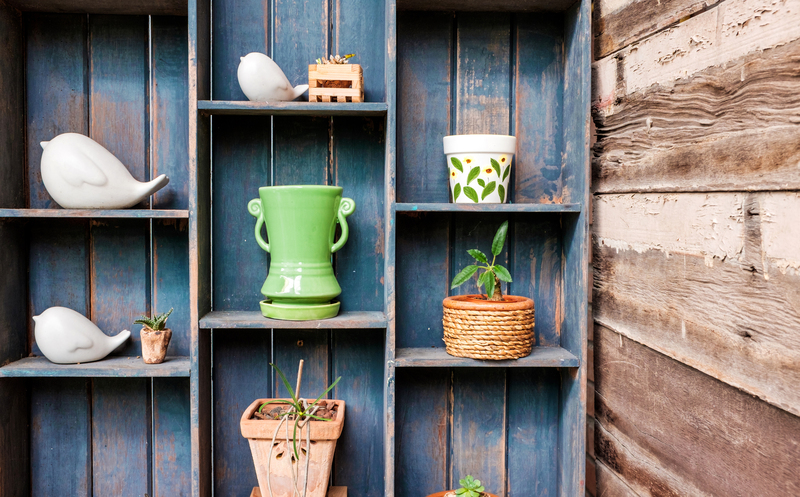Innovative Cardboard Disposal: Redefining Packaging Waste
Cardboard packaging is ubiquitous in our modern lives. From online shopping deliveries to store products, this sturdy material safely protects goods in transit. But with the staggering volume of boxes shipped daily, cardboard disposal has grown into a critical environmental issue.
In this comprehensive article, we'll explore how innovative cardboard disposal solutions are transforming sustainability efforts around the globe. You'll learn about the latest advancements in recycling, upcycling, and reducing packaging waste--plus get actionable tips to make your own cardboard usage and disposal more eco-friendly.
Understanding the Cardboard Waste Challenge
Cardboard, especially corrugated boxes, is the backbone of the global packaging industry. The demand for online shopping, home meal kits, and delivered goods means that cardboard waste generation is increasing at a rapid pace. According to the Environmental Protection Agency (EPA), Americans alone discard over 24 million tons of paper and cardboard packaging each year.
The Environmental Impact of Cardboard Waste
- Cardboard is made from wood pulp, contributing to deforestation if not sourced responsibly.
- Poor disposal practices lead to overflowing landfills and increased greenhouse gas emissions from decomposing paper fibers.
- Ink, adhesives, and coatings used in packaging can pollute recycling streams if not properly managed.
Clearly, the conventional linear model--use, then dispose--needs a makeover. Enter innovative cardboard disposal solutions.

Next-Generation Cardboard Disposal Methods
The way we manage cardboard waste is rapidly evolving. Innovative companies, municipalities, and environmental groups are pioneering fresh approaches to reduce, reuse, and recycle cardboard packaging. Here are some of the most promising advancements:
1. Smart Cardboard Collection Systems
- Smart bins equipped with sensors track and optimize pickup routes, ensuring collection only when bins are full. This saves fuel, time, and operational costs for collectors.
- RFID-tagged packaging enables traceability of large cardboard shipments to ensure proper recycling compliance.
2. Automated Sorting and Recycling
- State-of-the-art recycling plants use artificial intelligence (AI), robotics, and optical sorting machines to distinguish cardboard from other waste streams, resulting in purer, higher-quality recycled material.
- Closed-loop recycling systems transform old boxes into new packaging without significant quality loss.
3. Innovative Reuse and Upcycling Solutions
- Creative upcycling initiatives turn waste cardboard into furniture, insulation material, art, and building supplies.
- Companies are partnering with local artists and schools to repurpose cardboard for educational and community projects.
4. Compostable and Biodegradable Cardboard Innovations
- Scientists and startups are developing compostable packaging coatings that break down more quickly in soil, making cardboard safer for home and municipal composting.
- Water-based and plant-derived inks reduce contamination during disposal.
Why Innovative Cardboard Disposal Matters
Rethinking how we dispose of and manage our cardboard packaging waste isn't just about saving space in landfills. The positive outcomes of innovative cardboard disposal practices ripple out across the environment, economy, and society.
Environmental Benefits
- Reduces the need for virgin wood pulp, conserving forests and biodiversity.
- Decreases greenhouse gas emissions by minimizing methane from decomposing cardboard in landfills.
- Limits pollution in air and water received from traditional waste disposal methods.
Economic Advantages
- Creates green jobs in recycling plants, logistics, and upcycling businesses.
- Reduces procurement costs for manufacturers by supplying cheaper recycled cardboard material.
- Lowers municipal waste management expenses with efficient disposal systems.
Social Impact
- Fosters community involvement through local upcycling events and public awareness campaigns.
- Inspires innovation in the next generation, encouraging students to design sustainable solutions.
Breakthrough Technologies for Sustainable Cardboard Waste Management
Today's advancements in sustainable cardboard disposal are propelled by science and technology. Here are some groundbreaking approaches that are redefining how packaging waste is handled:
AI-Powered Recycling Facilities
Modern recycling centers are deploying artificial intelligence and machine learning systems to identify cardboard materials with extreme accuracy--even distinguishing between wax-coated, laminated, and corrugated types.
- Computer vision systems scan conveyor belts, diverting contaminants before they reach processing equipment.
- Data analytics provides insights for continuous improvement and reduced contamination rates.
Eco-Friendly Packaging Redesign
Major retailers and brands are redesigning packaging to use less cardboard, utilize 100% recycled content, and avoid non-recyclable coatings.
- Modular packaging enables easy disassembly and sorting after use.
- Flatpack designs minimize wasted space, reducing the overall volume of cardboard required.
Community-Led Upcycling and Repair Programs
Local organizations and maker spaces are creating workshops to teach people how to transform waste cardboard into valuable products:
- Sustainable furniture and home decor made from thick cardboard panels.
- Gardening supplies such as compostable seedling pots and weed barriers.
- STEM educational kits for children, utilizing recycled box materials.
Cardboard Disposal Best Practices for Businesses and Households
While policy-makers and industry leaders must continue pushing for large-scale innovation, individuals and companies can have a significant positive impact by adopting smart cardboard disposal habits. Here's how both businesses and households can contribute to a sustainable future:
For Businesses
- Source certified sustainable or recycled cardboard packaging.
- Conduct regular staff training on proper sorting and flattening of cardboard boxes prior to recycling.
- Partner with local recyclers and upcycling organizations for efficient, responsible disposal.
- Track your waste with sustainability metrics and set waste reduction goals.
For Households
- Flatten boxes to save space and fit more into recycling bins.
- Remove plastic tape, labels, or staples that contaminate recycling streams.
- Compost brown cardboard in small pieces if it's free of inks or wax coatings.
- Donate clean, sturdy boxes to local movers, schools, or community organizations.
Policy and Future Directions in Packaging Waste Reduction
Transforming cardboard waste management requires cohesive action--including strong policy frameworks and public-private partnerships. Here's what the future might hold:
Extended Producer Responsibility (EPR) Laws
Governments are implementing regulations that obligate manufacturers to take responsibility for the end-of-life management of their packaging materials. EPR laws stimulate design changes, encourage take-back schemes, and fund advanced recycling infrastructure.
Deposit and Return Schemes
Some regions are piloting systems that incentivize consumers to return packaging materials for a refund or store credit, similar to bottle deposit programs for glass.
Public Education and Awareness
Environmental agencies and non-profits are running public awareness campaigns to teach the importance of proper cardboard disposal and available recycling resources.

Success Stories: How Innovative Cardboard Disposal is Making a Difference
Around the world, pioneering initiatives showcase the impact of innovative cardboard waste management strategies:
- Germany's Dual System: This country boasts one of the highest packaging recycling rates in the world, thanks to mandatory separation, extended producer responsibility, and streamlined collection of cardboard and other packaging materials.
- Japan's Circular Loop: Japanese municipalities sort and bale cardboard waste with such precision that nearly all household cardboard is recycled back into new boxes.
- Cardboard Innovations in the USA: U.S.-based startups are using automated robotic arms and blockchain technology to trace and recycle millions of tons of waste packaging every year.
Conclusion: Shaping the Future of Cardboard Packaging Waste
The shift toward innovative cardboard disposal methods is not just a trend, but a necessity. As we strive for a more circular economy and sustainable future, every step counts--from advanced recycling facilities to thoughtful personal habits.
- Businesses can lead by example, investing in eco-friendly packaging and closing the loop on waste.
- Individuals can contribute by practicing diligent recycling, composting, and creative reuse.
- Governments and non-profits can amplify the message and build the infrastructure needed for lasting change.
Together, we can redefine packaging waste and ensure that each cardboard box is seen not as trash, but as a valuable resource in our sustainable society.
Ready to start?
The next time you break down a box, think beyond the bin. Adopt innovative cardboard disposal practices, inspire your community, and be part of the solution.